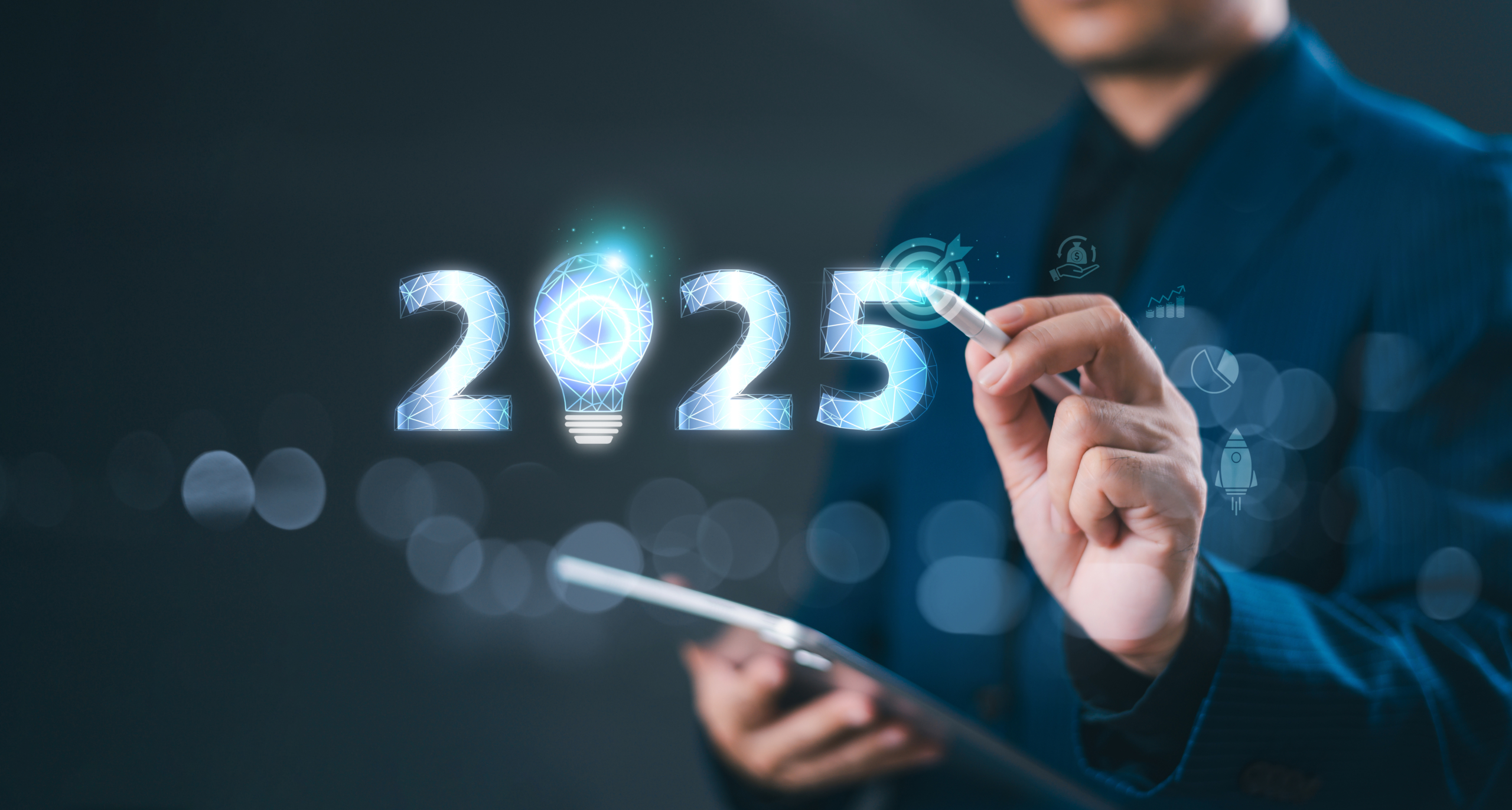2025: A Year of Transformation? Tech Leaders Share Their Wishes and Visions
Previously published on Techronicler
Even as leaders and experts shape the tech industry in their own ways, the influence they have on the details plays an important role in its innovations, shifts, transformations, and corrections.
Even so, there’s always the ideal wish or vision where we foster growth in a direction that will bring about changes that not only drives the industry forward but also fulfills the inherent dream that had us all pursue the tech life in the first place.
We checked in to find out what our Techronicler community envisions and hopes for 2025, and all that we uncovered indeed has the potential to change the technological landscape as we know it.
Read on!
Rise of Multimodal AI Models
In 2025, I’m excited to witness the continued rise of multimodal AI models-systems capable of processing and generating voice, video, image, and text seamlessly. These models represent the next frontier of innovation, with transformative potential across industries.
By enabling AI to understand and synthesize diverse inputs and outputs, we can unlock groundbreaking applications that touch every function of an organization, from creating dynamic marketing content to enhancing sales training and improving operational safety, like plant inspections.
What excites me even more is the rise of open-source multimodal AI models. These models democratize access to cutting-edge technology, significantly reducing the cost of training and enabling the development of tailored solutions through fine-tuning.
Open-source innovation paves the way for rapid experimentation and unique use cases that wouldn’t be possible in a proprietary-only ecosystem.
At Pictory.AI, we’re already leveraging multimodal AI to empower marketers and educators, enabling them to create engaging, impactful video content faster than ever before.
It’s a glimpse of the immense possibilities ahead, and I can’t wait to see how this wave reshapes the tech landscape in 2025 and beyond.

Vikram Chalana
CEO, Pictory.AI
Shift Toward Ethical AI Governance
In 2025, I hope to witness a transformative shift toward ethical AI governance.
With AI’s rapid integration into every sector, ensuring transparency, fairness, and accountability in its use has become more critical than ever. I envision frameworks that prioritize user data privacy, eliminate algorithmic biases, and demand greater explainability in AI decisions.
Such a transformation would empower businesses and users alike to trust and harness AI’s potential responsibly.
This shift matters because technology should elevate humanity, not compromise its values. Ethical AI governance would redefine how organizations build trust with their audiences while paving the way for sustainable innovation.
It would also inspire the tech community to collaborate on creating solutions that prioritize social impact alongside business goals—a balance the industry desperately needs as it shapes the future.

Shehar Yar
CEO, Software House
Active Use of Neural Networks
As the head of marketing at an IT company, I would love to see our employees make more active use of neural networks to handle routine tasks.
Artificial intelligence helps journalists and PR managers generate ideas for content more efficiently and reduces the time needed to write texts, freeing up resources for more complex creative projects.
Neural networks also serve as a powerful tool for creating images, inspiring designers to bring unconventional concepts to life. Additionally, they speed up the process of finding answers to difficult questions.
I genuinely believe that by 2025, AI-powered search engines will become particularly popular. These platforms not only provide relevant answers but also offer users an ad-free experience – like Bagoodex.
Recently, a colleague’s friend was interviewing for their dream job. During the interview, they were asked a challenging question and turned to the internet for help. However, they couldn’t quickly find the answer due to SEO spam and banner ads dominating the top results. Unfortunately, they didn’t get the dream job.
Today, people are highly demanding about everything – food, clothing, ads, apps, and even internet search. Intrusive advertising has worn everyone out. The future belongs to search engines that are clean, simple, and free of unnecessary distractions.

Nick Trenkler
CVO, Bagoodex
Modernization of Legacy Systems
If the tech sector can achieve one critical transformation in 2025, it should be the modernization of legacy systems—particularly application servers. This upgrade is essential for bolstering cybersecurity, enhancing operational resilience, and future-proofing businesses as threats grow and regulations tighten.
Legacy systems are the backbone of many organizations, but they’ve become liabilities.
According to recent data, 44% of mission-critical components, such as servers, storage, and operating systems, are near or past their end of life. This makes them increasingly vulnerable to sophisticated attacks, operational inefficiencies, and regulatory non-compliance.
Among these components, legacy application servers demand urgent attention. They host and run critical business applications, making them key targets for attackers. When left outdated, they become weak links that attackers can exploit with increasing ease.
Modernizing them should, therefore, be a top priority for organizations in 2025.
Without modern security patches and advanced protections, legacy application servers are poorly equipped to defend against sophisticated attacks. This problem is compounded when organizations rely on unsupported open-source projects, as without active vendor support, businesses must face security challenges and operational disruptions on their own.
These risks extend beyond cybersecurity: outdated systems often fail to meet modern regulatory standards, exposing companies to legal penalties and reputational damage.
Beyond the risks, modernizing application servers is an opportunity to align business operations with contemporary demands for security and resilience.
Upgrading these critical components enables companies to meet regulatory frameworks such as the EU’s Cyber Resilience Act (CRA), which mandates that digital products involving remote data processing must be secure by design.
While migrating mission-critical applications to modern runtime environments often requires substantial investments of time, resources, and expertise, the potential rewards far outweigh these initial challenges.
Collaboration with a reliable application server provider is key. Organizations should choose one that not only offers robust tools and resources but also demonstrates a commitment to frequent security updates, modern standards, and comprehensive support.

Luqman Saeed
Jakarta EE Specialist, Payara Services Ltd
Universal Connectivity Through Satellite Internet
A shift I’d like to see in 2025 is the ubiquitous implementation of universal connectivity through satellite internet.
With companies like SpaceX’s Starlink and Amazon’s Project Kuiper leading the charge, this innovation could bridge the digital divide by providing reliable, affordable internet access to remote and underserved areas worldwide.
A shift like this would unlock unprecedented opportunities in education, health care, and entrepreneurship for billions of people currently excluded from the global digital economy. It would also enable businesses to reach new markets, accelerate innovation in IoT, and drive progress in fields like telemedicine and remote work.
When we democratize access to the internet, universal connectivity has the potential to reshape economies and bring more equity to technology’s benefits. It’s a transformation that not only fuels growth but also makes sure that no one is left behind in the fast-moving tech space.

Matthew Lam
Full-Stack Developer, Penfriend
Democratizing Digital Literacy
I believe 2025’s most crucial tech transformation should be democratizing digital literacy through more intuitive software design. While we’re creating increasingly powerful tools, we’re often failing to make them accessible to non-technical users.
In our document management work, we’ve seen how complex features can overwhelm users, from small business owners to educational professionals.
The gap between what technology can do and what average users can effectively utilize continues to widen. This isn’t just about better tutorials – it’s about fundamentally rethinking how we design software.
At PDFEditify, we envision a future where advanced features like AI-powered document analysis become as intuitive as taking a photo on your phone. When we remove the technical barriers to entry, we don’t just improve individual productivity – we unlock innovation potential across every sector of society.

Talha Mahmood
Founder, PDFEditify
Intention-Driven Technologies
In 2025, I would most want to witness a transformative shift towards intention-driven technologies in the tech sector.
This shift would prioritize empowering users through technology that enhances focus and well-being rather than merely capturing attention.
As AI/ML architects and data scientists, we understand the potential of technology to augment human capabilities. However, the relentless pursuit of engagement metrics often leads to distraction and cognitive overload.
By embracing intention-driven design, we can create systems that support deep thinking and meaningful interactions, aligning with ethical imperatives and societal needs.
This transformation could redefine success in tech by fostering environments where technology serves as a tool for empowerment, not distraction, ultimately leading to more sustainable and humane digital ecosystems

Guy Korland
CEO, FalkorDB
Enterprise AI Integration
In 2025, forward-thinking organizations will shift from treating AI as an isolated solution for specific tasks.
Instead, organisations will integrate AI across the entire enterprise, driving value-added outcomes and cohesion throughout every department and process.
This would be a step change from executives “just throwing in AI” out of fear of missing out, resulting in isolated point solutions that are hard to maintain, adapt, and evolve.
While this approach brings short-term gains, it often creates technical debt and complexity that stalls innovation in the long-term − a value trap making future AI adoption even harder.
Next year, as AI continues to generate excitement, organizations must look past the hype and prioritize process orchestration. AI applications and services need to be orchestrated like any other endpoint within automated business processes to unlock the full value of AI investments.
This shift from adopting AI incrementally to fully integrating it will enable faster decision-making, more adaptive business strategies, and a level of agility that sets industry leaders apart.

Daniel Meyer
CTO, Camunda
Sustainable Tech Practices
In 2025, I would love to see a major shift toward sustainable tech practices, specifically in hardware manufacturing.
The rapid pace of innovation in devices often comes at the expense of e-waste and resource depletion. Imagine a framework where modularity becomes standard, allowing consumers to upgrade individual components instead of replacing entire devices.
This not only reduces waste but also makes tech more accessible and cost-effective.
For example, in the coffee tech space, a modular espresso machine that lets users swap out brewing components or upgrade to more efficient technology would revolutionize the industry.
Extending this idea across tech sectors could create a more circular economy, where innovation thrives without leaving behind a trail of obsolete devices.
It is a win for both consumers and the planet.

Wes Wakefield
Founder, Pro Coffee Gear
Streamlining Hiring to Avoid Mass Layoffs
I’d like to see the tech sector adopt a hiring philosophy that corrects the trend of over hiring, which has unfortunately become an industry hallmark.
Tech companies often swell their ranks during boom cycles, only to lay off thousands when market conditions shift (i.e., bust cycles), leaving careers and lives in disarray. This reactive approach damages trust and morale while eroding consumer confidence.
Mass layoffs raise concerns about a company’s stability, ethics, and service quality. This isn’t good business.
Instead, companies should operate with the discipline of a start-up—hiring only when strategy and sustainable growth demand it. This would mean resisting the temptation to scale prematurely and recognizing the human toll of expanding organizations only to gut them later.
A lean, focused workforce aligned with clear business objectives protects employees and fosters the innovation and resilience that companies need.
In 2025, I hope leaders prioritize thoughtful growth to ensure that people remain at the center of their decision-making.

Kellie Walenciak
Head of Marketing & Communications, Televerde
The Techronicler team thanks these leaders for taking the time to share their wishes and visions for the tech industry in 2025.


